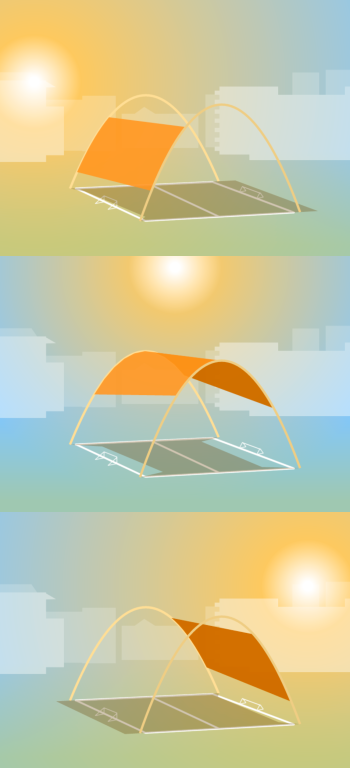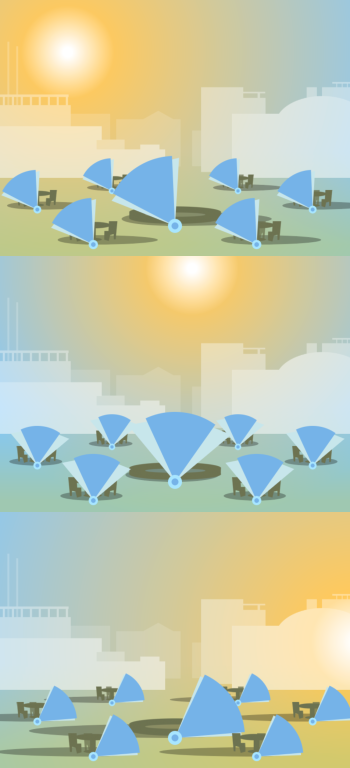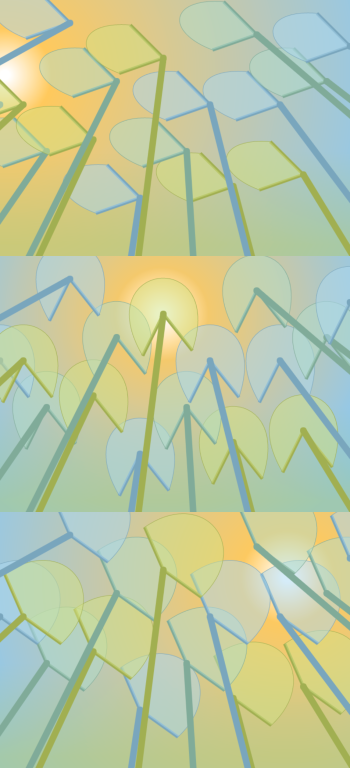Techniques that benefit human comfort in one climate may be ineffective or even unpleasant in another.
For example, outdoor items, such as benches, playground equipment, and doorknobs, are often made of metal. While this is a durable and sturdy building material, in extreme temperatures it can become so hot as to be literally untouchable. Therefore, a designer should consider what is the temperature range of the area where the item is going to be installed.
Another example is the use of misters, small sprinklers that light spray water into the air, as a means of cooling. In places that are extremely hot with low humidity, the water immediately evaporates, cooling the air. However, in a hot area with high humidity, the water would either not evaporate or just increase the humidity in the area. What was effective in one situation would only cause discomfort in another.
With this in mind, when determining how to design public spaces to keep people cool, we have to look specifically at the climate of Phoenix. Being in a desert, there is very low humidity. The dry air does not hold as much heat, resulting in there being a noticeable change in temperate if one is standing in the shade or direct sunlight. Therefore, an obvious and effective way to help keep people cool outdoors is to keep them in the shade.
However, keeping people shaded is not as simple as it first sounds. Phoenix is built on very flat terrain, so the sun can set far down into the horizon without being blocked by any natural land formation. This is so bad that it often interferes with drivers, as sundown and sunup are considered by many to be the most dangerous time of day due to the decreased visibility caused by the sun. Since morning and evening are often the time when most people want to go out to exercise or socialize, it is important to provide shade for people during these times.
While structures could be built that keep people shaded from the sun in every direction, those would nearly cover the whole area and cause a decrease in airflow. One of the keys to staying relatively cool is plenty of air movement, so a structure that is too covered may block the wind.
Given this environment, we designed prototypes for structures that could be used to shade a large area at all times of the day without blocking airflow. These pieces are designed to change structure over the course of the day to follow the path of the sun. Many of these designs could be implemented in multiple ways, from a high-tech automation to a DIY hand crank.
The animations of these prototypes were created using HTML5 Canvas, which allows the work to be easily viewed across browsers. In addition, because the pieces are composed of vector animation, they can run without being pre-rendered.
Two of the designs were created specifically to be used over large areas such as athletic fields, because of their specific needs. Due to their expansive size, athletic fields often have to be outside. Because the people using it will be engaging in exercise, it is necessary they stay cool. In addition, large groups generally gather at athletic fields in the evening, when it is most convenient for people to find free time.
The other designs are for shading public outdoor areas.
In one case, the goal was to use shade to create increased privacy in a public space. At sunrise and sundown, the individual shades fold to the side, giving some privacy for the people sitting at each table.
In the other, the shades were variations of blue and green colors, and fold into a shape that resembles lily pads, in order to invoke ideas of water while shading the people below. This hopefully offers some relief from the constant dry, hot temperature that the denizens of the area experience every day.



